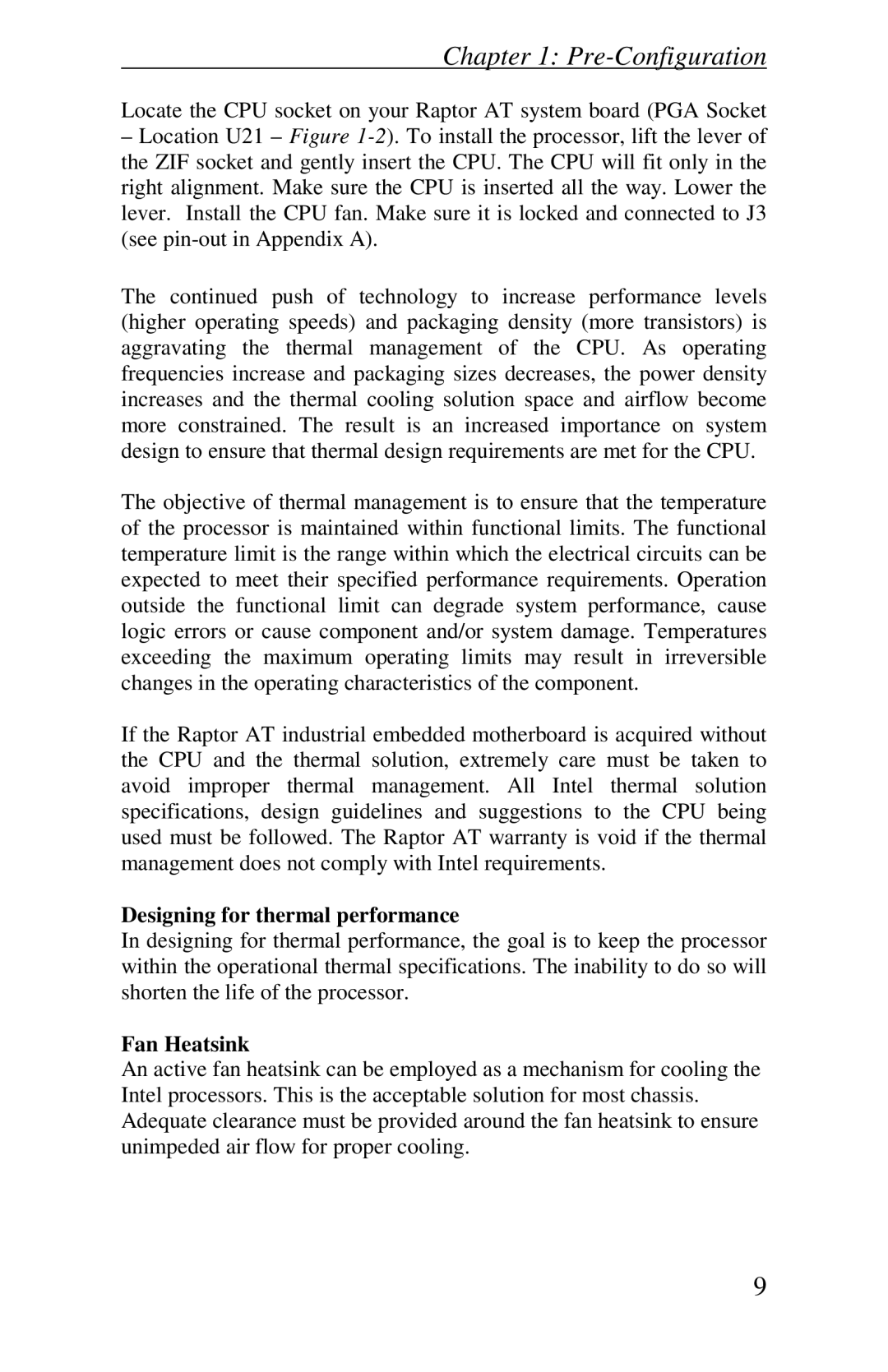Chapter 1:
Locate the CPU socket on your Raptor AT system board (PGA Socket
–Location U21 – Figure
The continued push of technology to increase performance levels (higher operating speeds) and packaging density (more transistors) is aggravating the thermal management of the CPU. As operating frequencies increase and packaging sizes decreases, the power density increases and the thermal cooling solution space and airflow become more constrained. The result is an increased importance on system design to ensure that thermal design requirements are met for the CPU.
The objective of thermal management is to ensure that the temperature of the processor is maintained within functional limits. The functional temperature limit is the range within which the electrical circuits can be expected to meet their specified performance requirements. Operation outside the functional limit can degrade system performance, cause logic errors or cause component and/or system damage. Temperatures exceeding the maximum operating limits may result in irreversible changes in the operating characteristics of the component.
If the Raptor AT industrial embedded motherboard is acquired without the CPU and the thermal solution, extremely care must be taken to avoid improper thermal management. All Intel thermal solution specifications, design guidelines and suggestions to the CPU being used must be followed. The Raptor AT warranty is void if the thermal management does not comply with Intel requirements.
Designing for thermal performance
In designing for thermal performance, the goal is to keep the processor within the operational thermal specifications. The inability to do so will shorten the life of the processor.
Fan Heatsink
An active fan heatsink can be employed as a mechanism for cooling the Intel processors. This is the acceptable solution for most chassis. Adequate clearance must be provided around the fan heatsink to ensure unimpeded air flow for proper cooling.
9
